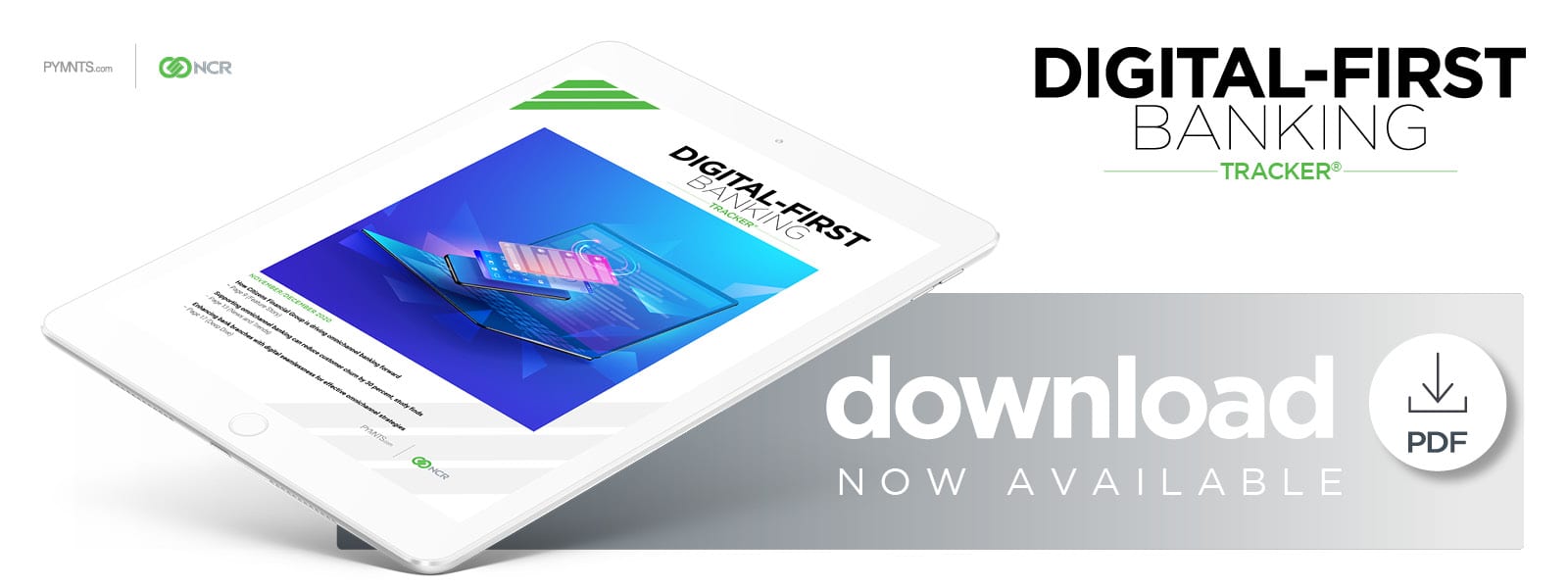How Citizens Financial Group Is Driving Omnichannel Banking Forward

Consumers are looking for digital-first banking tools, but banks can’t put all their eggs into one digital basket. In the latest Digital-First Banking Tracker, Eric Schuppenhauer, president of consumer lending and national banking at Citizens Financial Group, discusses the need for cohesive omnichannel experiences that meet customers’ needs today and in the post-pandemic future.
Consumers were flocking to digital and mobile banking well before the pandemic’s onset, but social distancing and limited branch operations highly accelerated that uptake.
Banking customers are now searching for financial partners that not only offer digital experiences but also allow consumers to complete transactions wherever and however they want.
Crafting omnichannel experiences that encompass both the flexibility of digital and the familiarity of brick-and-mortar banking is becoming more critical for banks looking to compete during the pandemic, but interactions that take place in these channels must be seamless. These interactions must give consumers the impression that they are still transacting with the same bank regardless of which channel they have chosen to use, said Eric Schuppenhauer, president of consumer lending and national banking at Citizens Financial Group. Having back-end processes that can integrate and support services in multiple channels with the same level of attention is therefore key to marrying both online and physical for a consistent, bank-branded feel, he explained.
“It goes to consistency of process,” he said in a PYMNTS interview. “Everybody talks about the digital front end, and you need to have a great user interface that customers love to use, clearly, that both meets their needs and meets them where they are in terms of their use of the banking service. They need to feel … that it is the exact same bank when they walk in, [however]. … It is looking at your process and making sure that that same seamless feeling exists if they are dealing with a [banker] in a branch.”
Keeping the banking experience consistent requires banks to develop a holistic strategy for omnichannel solutions and offerings — a need that has become more important since mid-March.
Putting Omnichannel Into Context
Banks have been inching toward omnichannel in recent years, but financial institutions (FIs) have had to navigate challenges to set up truly convenient connections between brick-and-mortar, online and mobile channels. Merging these channels can be difficult if banks’ websites and mobile apps are designed differently, for example, or if FIs have not integrated solutions at bank branches that help staff members address consumer requests with ease.
“The biggest component is getting your digital tools to interact,” Schuppenhauer said. “You can start within the comfort of your living room [as a consumer], but you can walk in and continue that same transaction, same service, right from a branch, just pick up where you left off. That is the thing that we are working on…That is when you get omnichannel right, [when] it does not matter where you are, everything has the same contextual rendering.”
Citizens, like most banks, has seen engagement with its digital banking tools grow as the pandemic has pushed consumers to reduce in-person interactions. Transactions outside of the branch have overtaken those made in person, according to Schuppenhauer, and the use of its mobile check deposit feature has increased by more than 50 percent year over year, with overall mobile usage increasing by 15 percent. FIs must still be sure to keep that consistency of brand in mind when they are developing mobile apps or other emerging tools, however.
“When we look at the digital initiatives, we provide the capability for customers to do everything from their living rooms, if you will, especially [given the current] time period,” he said. “In some instances, folks prefer to come into the branch, and so we actually have that capability available to them in our footprint markets, but what we have observed is, it is not that they pick one or the other. They end up using both, in some instances, … so we have to be able to serve them such that when they experience us either digitally or physically, they experience the same bank all the way through.”
Citizens is seeing a sharp decline in branch visits, Schuppenhauer admitted, with in-person transactions decreasing by 40 percent year over year. This does not mean brick-and-mortar banking is on the path toward extinction, however. He said he believes that physical banking will not only stick around for the long haul but also continue to play a critical role in the banking experience in the post-pandemic future.
Why Digital-Only Is Not Enough
Although branch visits are declining and digital adoption is on the upswing, it is important for banks not to focus so completely on cultivating their digital or mobile channels that they neglect the traditional, in-person banking experience that plenty of consumers still appreciate. FinTechs or neobanks that have put all their eggs into one digital basket may actually be at a disadvantage when it comes to competing in the omnichannel environment, Schuppenhauer noted.
“The worry I have is actually for those digital-first companies that then have to go figure out how to create physical [experiences],” he said. “I actually think that we have a head start [in omnichannel] because we have been in the physical business with branches for many, many decades, and we know how to do that part of the business.”
This does not mean that he expects the physical bank branch’s role to stay the same as it has for the past several decades. How brick-and-mortar branches are used and why consumers will rely on them is already changing, he said. It is more likely that branches will become spaces for financial guidance and advice as opposed to where transactions or other day-to-day banking activities take place.
Brick-and-mortar banking will continue to occupy an essential role in the larger, omnichannel financial world. Banks that can successfully compete within this ecosystem must therefore be sure they are providing a seamless, brand-cohesive experience to their consumers, regardless of the channel.

